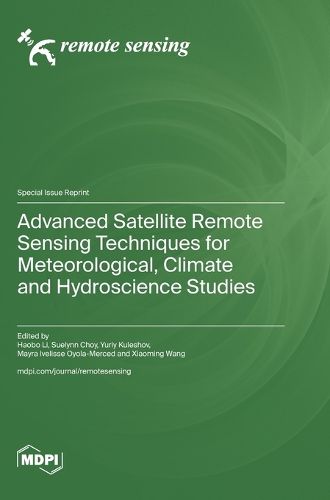Readings Newsletter
Become a Readings Member to make your shopping experience even easier.
Sign in or sign up for free!
You’re not far away from qualifying for FREE standard shipping within Australia
You’ve qualified for FREE standard shipping within Australia
The cart is loading…






This title is printed to order. This book may have been self-published. If so, we cannot guarantee the quality of the content. In the main most books will have gone through the editing process however some may not. We therefore suggest that you be aware of this before ordering this book. If in doubt check either the author or publisher’s details as we are unable to accept any returns unless they are faulty. Please contact us if you have any questions.
The increasing frequency and intensity of weather and climate extremes have led to significant societal and environmental challenges. Recent advancements in satellite remote sensing technologies, including Global Navigation Satellite System (GNSSs) and other space-based techniques, provide critical tools for monitoring atmospheric processes, improving early warning systems, and enhancing climate resilience. This Special Issue reprint brings together 11 studies that explore cutting-edge remote sensing methodologies for severe weather detection, hydrometeorological analysis, and climate monitoring. Key topics include the evaluation of near-real-time satellite precipitation data, GNSS-derived atmospheric water vapor measurements, and the sensitivity of polar mesospheric clouds to mesospheric temperature and water vapor. Several studies in this reprint also address multi-source data fusion techniques to refine precipitation retrievals and improve the detection of weather extremes. Additionally, novel GNSS-based methodologies are explored for atmospheric sounding and hydrometeorological applications. By integrating state-of-the-art atmospheric remote sensing techniques with novel analytical methods, these studies contribute to a deeper understanding of atmospheric dynamics, enhance forecasting accuracy, and support sustainable development initiatives. The findings provide valuable insights for atmospheric monitoring, disaster risk reduction, and the advancement of global meteorological and climate services.
$9.00 standard shipping within Australia
FREE standard shipping within Australia for orders over $100.00
Express & International shipping calculated at checkout
This title is printed to order. This book may have been self-published. If so, we cannot guarantee the quality of the content. In the main most books will have gone through the editing process however some may not. We therefore suggest that you be aware of this before ordering this book. If in doubt check either the author or publisher’s details as we are unable to accept any returns unless they are faulty. Please contact us if you have any questions.
The increasing frequency and intensity of weather and climate extremes have led to significant societal and environmental challenges. Recent advancements in satellite remote sensing technologies, including Global Navigation Satellite System (GNSSs) and other space-based techniques, provide critical tools for monitoring atmospheric processes, improving early warning systems, and enhancing climate resilience. This Special Issue reprint brings together 11 studies that explore cutting-edge remote sensing methodologies for severe weather detection, hydrometeorological analysis, and climate monitoring. Key topics include the evaluation of near-real-time satellite precipitation data, GNSS-derived atmospheric water vapor measurements, and the sensitivity of polar mesospheric clouds to mesospheric temperature and water vapor. Several studies in this reprint also address multi-source data fusion techniques to refine precipitation retrievals and improve the detection of weather extremes. Additionally, novel GNSS-based methodologies are explored for atmospheric sounding and hydrometeorological applications. By integrating state-of-the-art atmospheric remote sensing techniques with novel analytical methods, these studies contribute to a deeper understanding of atmospheric dynamics, enhance forecasting accuracy, and support sustainable development initiatives. The findings provide valuable insights for atmospheric monitoring, disaster risk reduction, and the advancement of global meteorological and climate services.